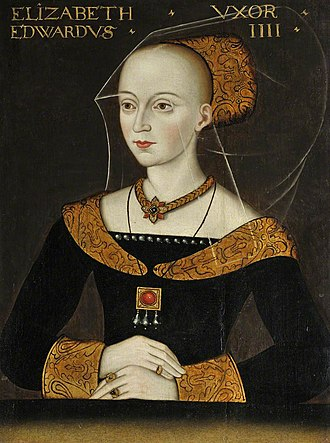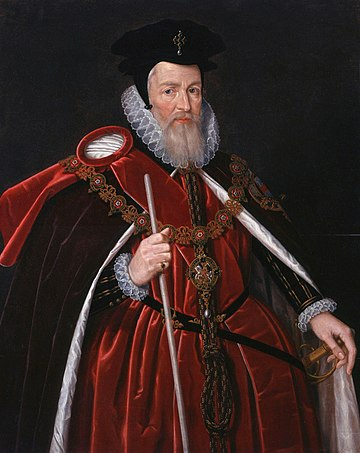A Dramatic Twist:
The Accession of King Richard III
Richard Plantagenet, Duke
of Gloucester, acceded to the throne of England as King Richard III on 26 June 1483.
But how did someone, who was originally 5th in line, seize the crown
in a matter of months? Today, we will discuss Richard’s almost impossible
accession as King of England.
Richard Plantagenet was
the eleventh of twelve children born to Richard Plantagenet, Duke of York, and
his wife, Cecily Neville. Richard’s childhood was spent in the shadow of the
tumultuous time we now know as the Wars of the Roses. Richard’s father, the
Duke of York, made a play for the throne, as King Henry VI was an inept king.
For years, the Yorks would fight their cousins, the Lancasters, in a disastrous
tug of war for power, which resulted in the death of the Duke of York and his
second son, Edmund Plantagenet, among many others.
The Duke of York’s eldest son, Edward Plantagenet, continued his father’s work, winning battle after battle, and was eventually crowned King Edward IV. Edward IV elevated his brothers to the peerage- George was named the Duke of Clarence and Richard, the Duke of Gloucester. George and Richard were both made Knights of the Garter and Knights of the Bath.
Richard was the quintessential
chivalric knight of the time. Most importantly, he was loyal to his brother,
Edward IV. Richard’s elder brother, George, Duke of Clarence, on the other
hand, was not. George was never satisfied- he was resentful of living in his
elder brother’s shadow. He wanted power for himself; what he had was never
enough. George allied himself, against his own York family, with the
Lancastrians during the period now known as the Readeption- when Edward IV was
forced into exile and Henry VI was placed back on the throne. Unlike George, Richard
chose to back his brother and fled into exile with Edward IV. George’s
resentment, jealousy and constant plotting, combined with his erratic behavior,
would cost him his life. He was found guilty of treason and, according to lore,
was drowned in a barrel of Malmsey wine. Because of George’s attainder, his son
and heir, Edward Plantagenet, Earl of Warwick, was disinherited and debarred
from inheriting the throne.
When Richard arrived back
in England with Edward IV, they embarked on a military campaign to recapture
Edward’s crown. Richard proved himself a brave and strong military leader. Once
Edward IV was securely back on the throne, Richard returned to the north with
his wife, Anne Neville. Edward IV gave Richard significant authority, and he
was well regarded by his subjects. The Scots were a constant threat in the
north and Richard managed to keep them at bay. In 1482, Richard recaptured Berwick-upon-Tweed
from Scotland and it has remained in English hands ever since.
Edward IV died
unexpectedly on 9 April 1483. Edward’s son, also named Edward, was his heir and
successor. However, since Edward died so young and unexpectedly, there were no
plans put in place for the accession of his son, King Edward V. Edward IV named
Richard as Lord Protector of Edward V, as he was only 12 years old and unable
to rule in his own right. Upon hearing of the news of his brother’s passing,
Richard immediately departed Yorkshire for London. At the same time, Edward
IV’s widow, Dowager Queen Elizabeth Woodville, ordered that her brother,
Anthony Woodville, bring Edward V to London. Richard had corresponded with
Anthony Woodville, and they agreed to meet at Northampton, on the way to
London.
Interestingly, Anthony
had sent Edward V ahead, further south to Stony Stratford, with the armed
guard. Anthony, along with his nephew Richard Grey, and Thomas Vaughan, met
Richard at Northampton. Shockingly, Richard had the three men immediately
arrested. Richard accused them of treason against the Lord Protector. They were
taken to Pontefract Castle where they were executed on 25 June 1483.
Richard retrieved Edward
V from Stony Stratford and advised him that his uncle, Anthony Woodville, his
half-brother, Richard Grey, and Thomas Vaughan had plotted against Richard and
had been executed. It has been said that Edward V did not believe Richard and
defended his uncle and half-brother, stating they would never do such a thing.
Richard escorted Edward V
to London. Arriving on the 4 May, Edward V was first placed into the Bishop’s
apartments, but then quickly moved to the royal apartments at the Tower of
London. It was custom that most kings spent their time awaiting their
coronation at the Tower. All seemed in order.
Whilst all of this was happening, Dowager Queen Elizabeth Woodville fled into sanctuary in Westminster Abbey. There were factions at court and Elizabeth was not well liked. Her most prized possession, her son, Edward V, was in the hands of her perceived enemy. Elizabeth feared for her safety and for that of her family. What Elizabeth did have, was her second son, Richard Plantagenet, Duke of York. The Duke of York went into sanctuary with his mother, alongside his sisters and half-brother, Thomas Grey.
Richard, Duke of
Gloucester and Lord Protector, began to suspect Elizabeth of plotting against
him. In a second completely shocking episode, Richard accused William Hastings,
his ally and Edward IV’s best friend, of conspiring with the Dowager Queen.
Hastings had never been fond of the Woodville family, so this accusation seems
to have come out of nowhere. Richard confronted Hastings during a council
meeting. Hastings was dragged out of the chamber and brought to the courtyard
where he was immediately executed. Hastings was not offered a trial and did not
have the chance to defend himself. It makes me wonder, what did Hastings know
that Richard could not risk a trial and also required Hastings’ immediate
death?
On 16 June 1483, Dowager
Queen Elizabeth Woodville found herself in sanctuary in Westminster Abbey,
surrounded by armed guards of Richard, Duke of Gloucester and Lord Protector. Richard
demanded Elizabeth release her second son, Richard, Duke of York, into his
custody. Edward V was lonely in the Tower of London, awaiting his coronation
which was planned for the 22 June. Richard told Elizabeth his brother should be
with him to keep him company. Many disparage Elizabeth for handing over her
second son, but I don’t think she had much of a choice. The Abbey was
surrounded and if she didn’t send her son out, the armed men would certainly come
in. She had the many lives of her children in her hands, and she was forced to
trust in Richard. Elizabeth ultimately handed over Richard, Duke of York.
On 22 June, an important
event took place. It was not the planned coronation of King Edward V, but
rather, in a dramatic twist, a sermon was preached outside of Old St. Paul’s
Cathedral by Ralph Shaa, which declared the marriage between Edward IV and
Elizabeth Woodville invalid, and their children, illegitimate. Richard had been
previously informed of a pre-contract of marriage between Edward IV and Eleanor
Butler, and he believed this was the perfect time to bring the scandal to
light.
The sermon given declared
Richard the rightful King of England. After hearing the sermon, a petition was
drawn up by the citizens of London, urging Richard to take the throne. Initially
reluctant, Richard accepted the position on 26 June 1483. He was crowned as King
Richard III at Westminster Abbey on 6 July 1483. King Richard III, initially 5th in the line of succession, was the last Plantagenet
king to be crowned.
The two Princes in the
Tower, Edward V and Richard, Duke of York, were never seen again.



















